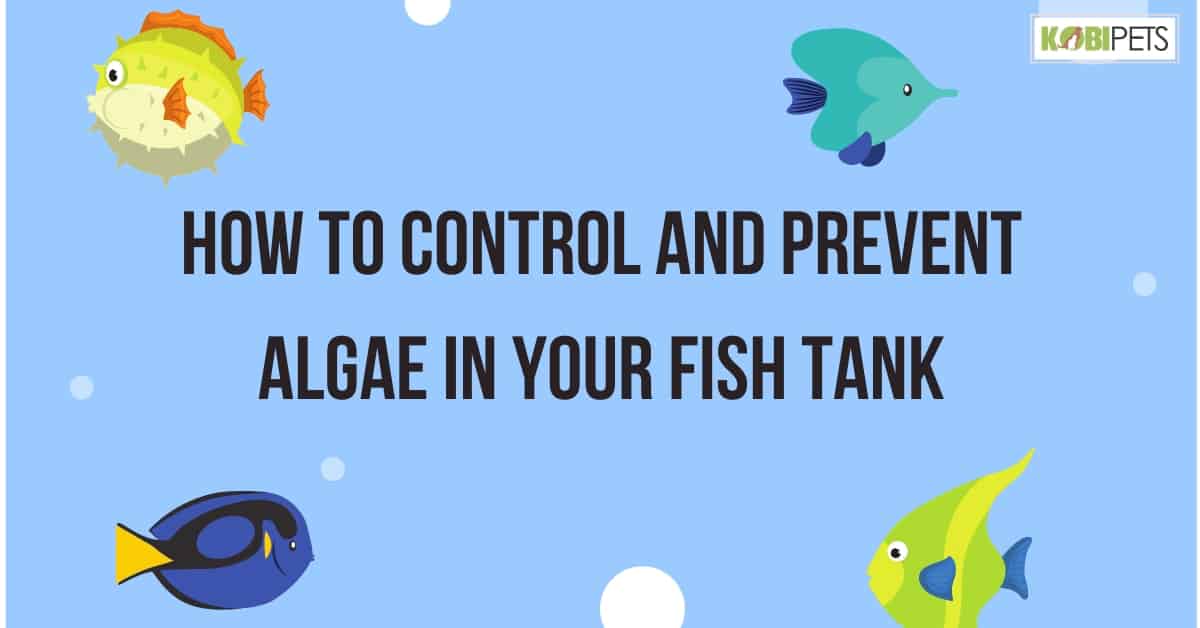
Algae can be a major issue in any fish tank. Not only does it create an unattractive and cluttered appearance, but it can also produce toxins and cause oxygen levels to drop which can be fatal for your fish. Fortunately, there are several steps you can take to control and prevent algae growth in your fish tank.
In this blog, we’ll discuss the different types of algae, how to identify and eliminate them, and some tips for keeping your fish tank free from algae growth. Read on to learn more about how to prevent algae in your aquarium!
What is Algae?
Algae is a type of photosynthetic organism that belongs to the Kingdom Protista. It usually grows in water and can range in size from microscopic single-celled organisms to large multicellular species. Algae is important for sustaining global food webs and energy sources, as it produces oxygen, absorbs carbon dioxide, and recycles nitrogen.
Common examples include seaweeds like kelp, spirulina, and nori, which are edible forms of algae widely used in many cuisines throughout the world. On a global scale, algae also serve as an important biofuel source, one that is renewable and environmentally friendly. In short, algae is a fundamental part of the planet’s complex ecosystem that impacts us all.
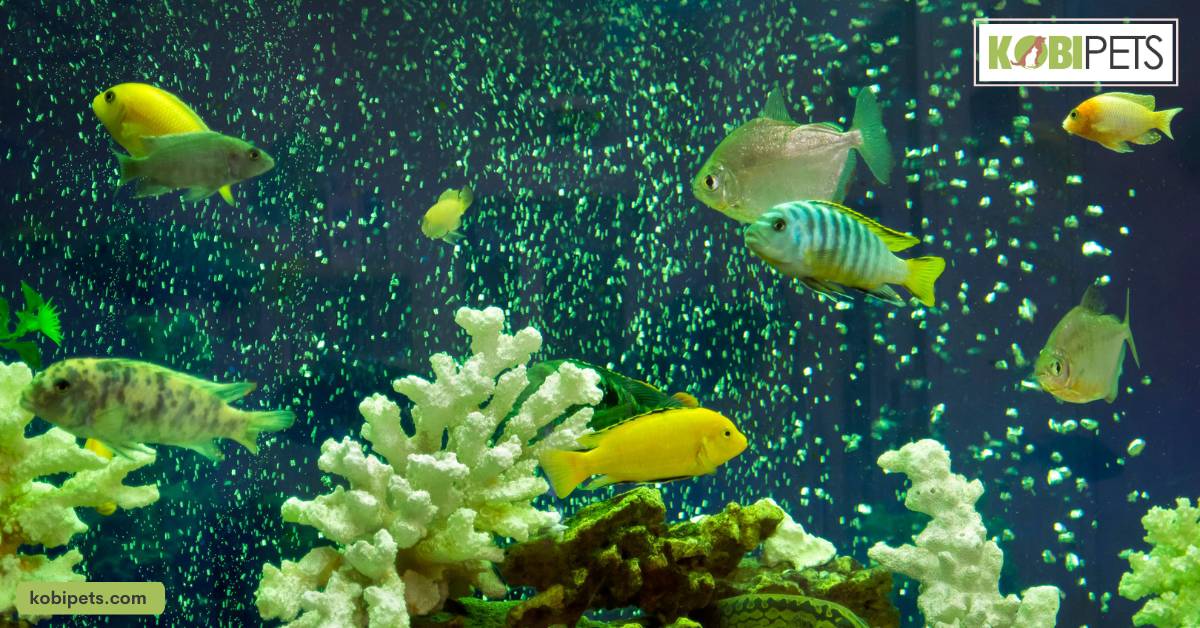
How to Control Algae
Algae are a type of plant-like organism that inhabit both land and water. While some types of algae can be beneficial, excessive algae growth can be problematic, leading to an imbalance in the ecosystem.
Algae blooms can deplete oxygen in the water, making it difficult for fish and other aquatic life to survive. Controlling algae growth can help restore balance to an ecosystem, and prevent further damage.
Controlling algae growth in your fish tanks or ponds can be a difficult task, but with a few simple steps, you can ensure optimal tank health and aesthetics.
Algae growth is generally caused by excessive sunlight or too much uneaten food left in the water. To prevent this, try avoiding direct light exposure in your tank, especially during the brightest parts of the day. Additionally, make sure to feed your fish just enough to satisfy their hunger – any extra food left in the tank will only fuel algae growth.
Regularly removing any visible algae from the tank is also essential for keeping it clean. Some aquarium owners may also choose to invest in algae-eating species such as shrimp or snails, which can help keep the algae levels under control while providing a natural form of maintenance.
Altogether, these simple steps should help you keep your fish tank free of unsightly and potentially dangerous algae growth.
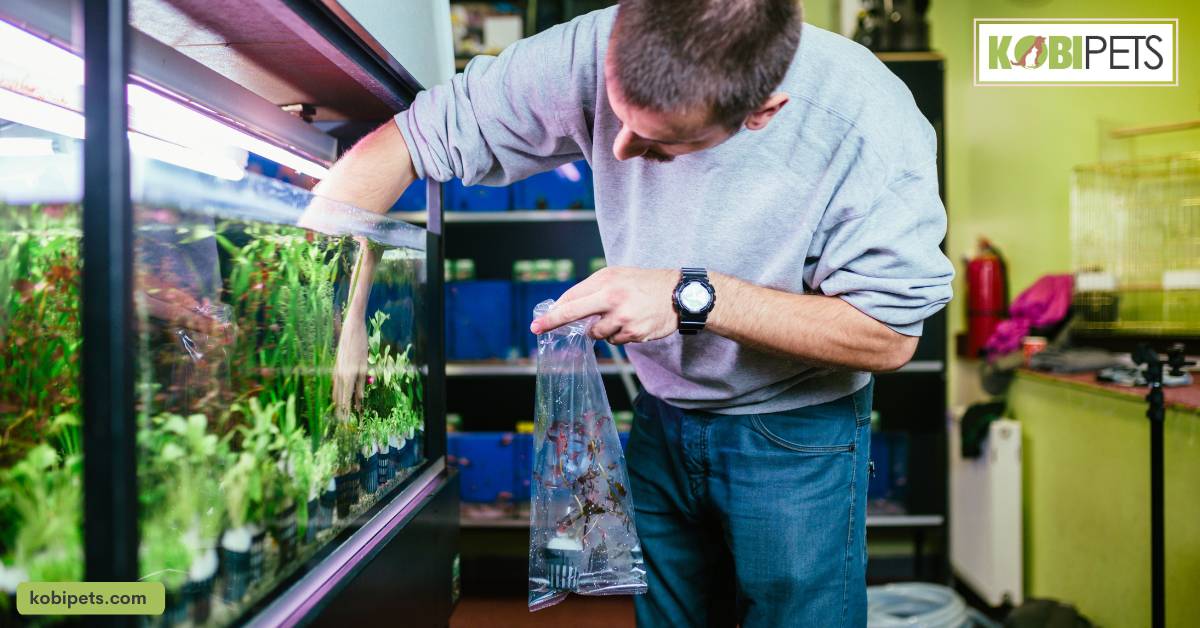
Preventing Algae From Returning
Algae can quickly accumulate in any body of water and be a nuisance to both aquatic life and humans. But, with the right prevention measures, algae can be kept under control so it does not become a problem. Here are some simple steps for preventing algae from returning once it’s been removed. By implementing these strategies, you can help keep your pond or pool looking clean and inviting.
- Keep the aquarium clean – Regularly remove any excess algae, dirt, and debris with a net or siphon.
- Maintain optimal water quality – Make sure to test the pH levels and nitrate levels of the tank’s water and do water changes regularly to keep them within the ideal range for your fish.
- Avoid overfeeding – Excess food can cause algae to bloom by adding more nitrates than normal to the water. Feed only as much food as your fish can eat in a few minutes.
- Reduce lighting hours/intensity – Algae need light in order to grow, so reducing how long your aquarium lights are on, or lowering their intensity will help slow down algae growth.
- Introduce algae-eating animals – Certain aquatic snails, shrimp, and some types of fish will happily snack on excess algae growing around the tank and help keep it at bay.
- Increase plant life in the tank– Using live plants not only makes the aquarium look nicer but also offers competition for nutrients that would normally be taken up by algae, starving them out instead!
- Use chemical control measures – There are many anti-algae treatments available for both fish tanks and ponds that can help prevent future blooms from happening again if used correctly.
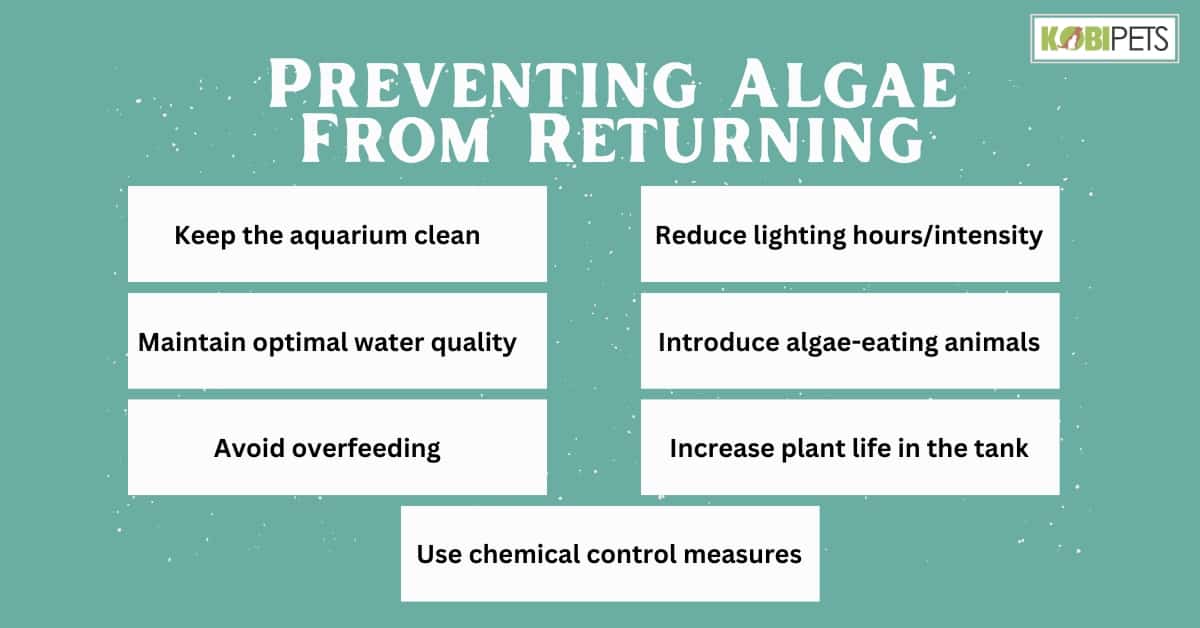
Preventing Algae From Returning
Benefits of Controlling and Preventing Algae
Algae is an all-too-common issue in water, and it can cause serious problems for aquatic systems. Controlling and preventing algae growth is essential to ensuring clean, healthy waters. It can provide a range of benefits including improved water quality, better aquatic habitat, enhanced recreational opportunities, fewer invasive species, and reduced costs associated with algal blooms. Below are the various benefits of controlling and preventing algae growth in aquatic environments:
1. Maintaining a clean and clear tank: Algae can cloud the water and make it difficult to see your fish and other aquatic life.
2. Improved water quality: Algae can consume oxygen and release harmful toxins, which can harm fish and other aquatic life.
3. Better aesthetics: A tank with less or no algae is more visually appealing and easier to maintain.
4. Healthier fish: Algae can consume oxygen and release harmful toxins, which can harm fish and other aquatic life.
5. Encourages growth of beneficial aquatic life: Fewer algae means more room for plants and other beneficial aquatic life.
6. Cost-effective: Algae control and prevention methods are cost-effective as it reduces the need for costly chemical treatments.
7. Energy-efficient: Algae can consume energy by growing on tank surfaces, preventing light penetration and photosynthesis.
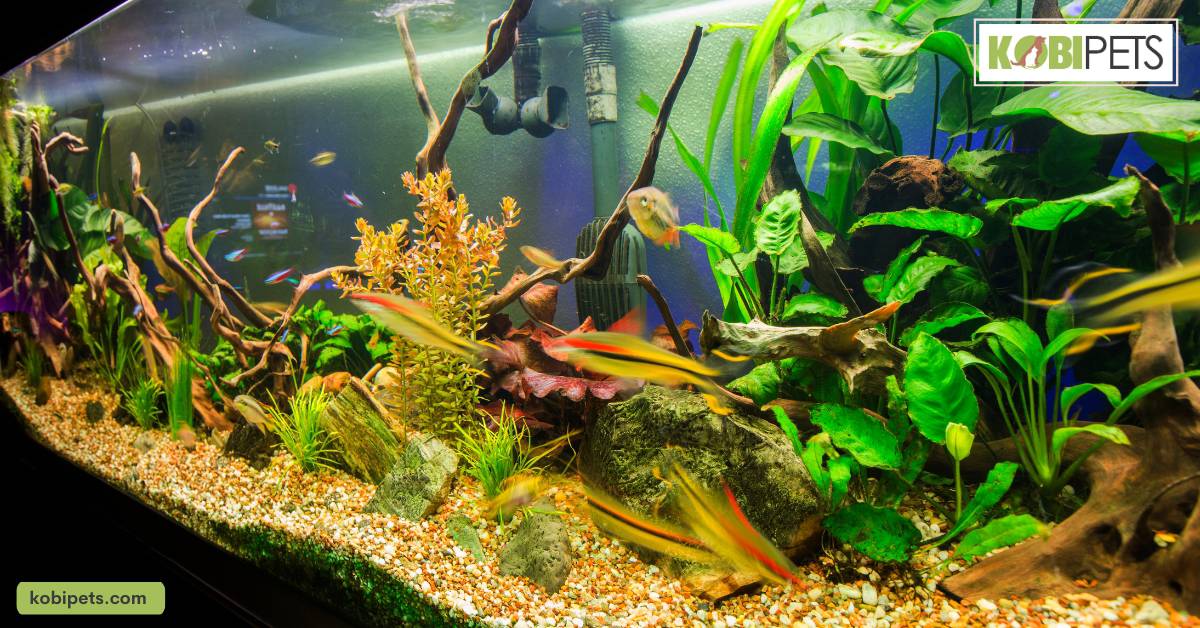
Tools and Techniques for Controlling and Preventing Algae
Algae is one of the most common problems in aquatic ecosystems. Controlling and preventing algae is essential to sustaining a healthy water environment. There are a variety of tools and techniques available for controlling and preventing algae growth.
The first step in controlling and preventing algae is to understand the key factors involved in its growth. These include:
- light
- nutrients
- oxygen levels
- salinity
- pH balanced
- temperature
- water turbulence
Algae can be controlled by manipulating these environmental factors or introducing natural predators (such as fish or invertebrates). Additionally, chemical algaecides can be used to kill unwanted algae populations while leaving organisms that contribute positively to the ecosystem unharmed. Algae barriers are also an effective tool in controlling and preventing its spread by blocking incoming sunlight from reaching the organisms responsible for its growth.
Lastly, good management practices play an important role in controlling and preventing algae bloom. This includes:
- limiting nutrient inputs from fertilizers
- avoiding overwatering
- implementing proper sanitation techniques
- periodic monitoring of water quality
- certain types of grazing with livestock
- protecting shorelines from erosion
- maintaining balanced plant populations
- promoting native vegetation on land near water sources
- increasing aquatic connectivity between water bodies
- providing shade over ponds to reduce surface heating caused by direct sunlight, etc.
These practices help make sure that local ecosystems remain healthy and free from nuisance algal blooms caused by excessive nutrient inputs.
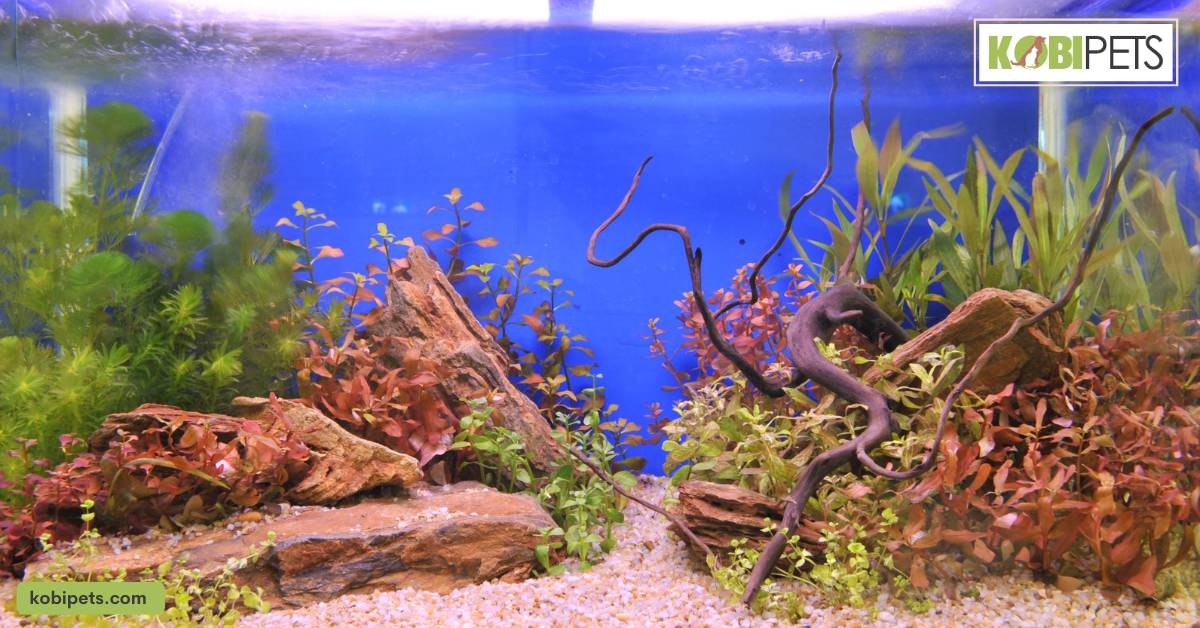
In Conclusion
Overall, controlling and preventing algae growth is essential for maintaining a healthy aquatic ecosystem. There are many tools and techniques available to help manage algae populations, such as manipulating environmental factors, introducing natural predators, using chemical algaecides, installing barriers, and practicing good management practices.
By implementing these various methods of control and prevention in your aquatic environment, you can help ensure a healthy and thriving aquatic ecosystem for years to come.


